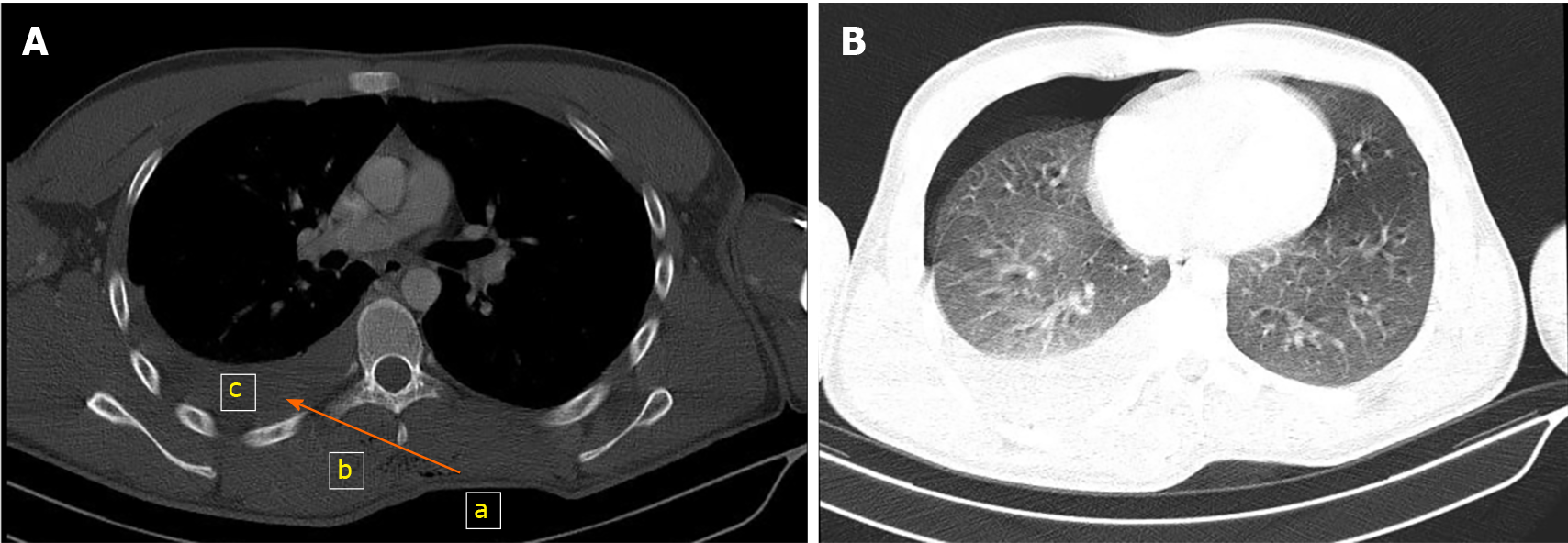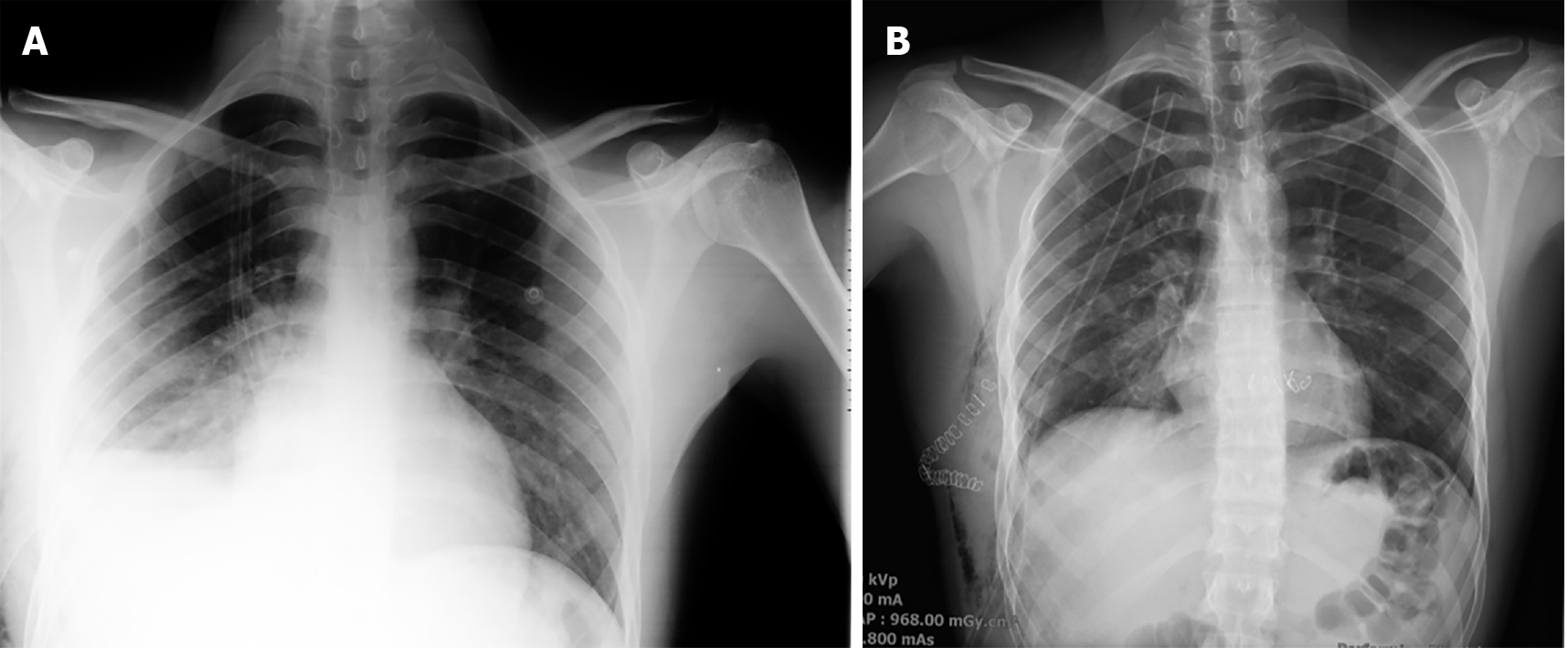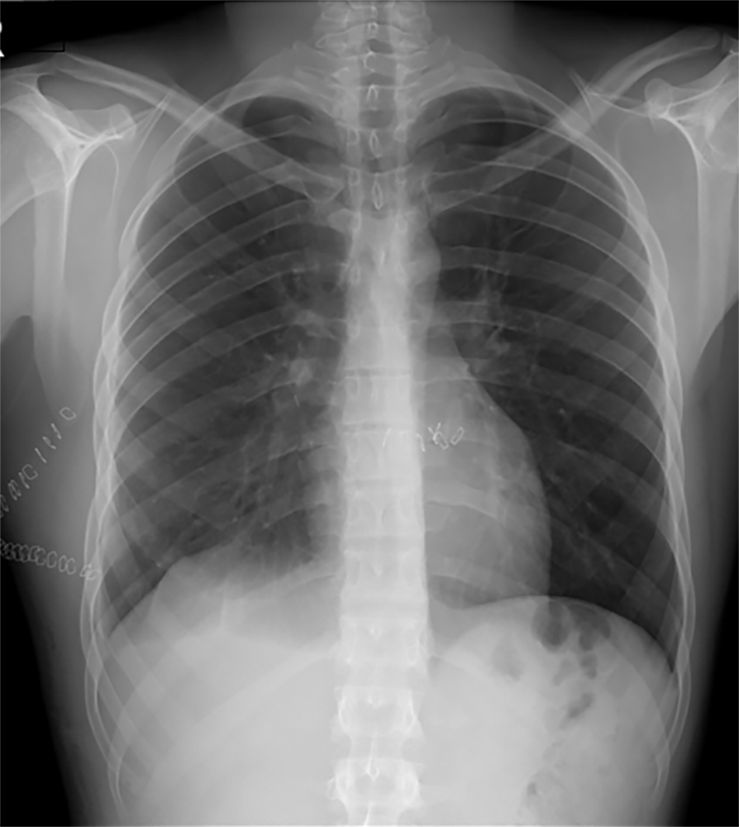Copyright
©The Author(s) 2021.
World J Clin Cases. May 26, 2021; 9(15): 3773-3778
Published online May 26, 2021. doi: 10.12998/wjcc.v9.i15.3773
Published online May 26, 2021. doi: 10.12998/wjcc.v9.i15.3773
Figure 1 Pre-operative thoracic computed tomography.
A: Mediastinal window section of thoracic computed tomography: from a to b (level of the arrow). Penetration site of the sharp object (the pressure of dressing can be seen). A pneumoderma can be seen in the route taken by the sharp object from the left to right hemithorax; c: right hemithorax; B: Parenchymal window section of thoracic computed tomography: right hemopneumothorax.
Figure 2 Posteroanterior chest X-rays after surgery.
A: Posteroanterior chest X-ray taken after right tube thoracostomy in the emergency room: the pneumothorax line in the right hemithorax is regressed, but the image of the right hemithorax is consistent with a hematoma; B: Posteroanterior chest X-ray taken after emergency right thoracotomy.
Figure 3 Posteroanterior chest X-ray at discharge.
The patient was followed up for 6 mo and had no complaints.
Figure 4 Patient’s scars.
The “a” shows the sharp object wound scar between the left border of the spinal line and medial border of the left scapula in the posterior left hemithorax; “b” shows right posterolateral thoracotomy scar; and “c” shows the right tube thoracostomy scar.
- Citation: İşcan M. Contralateral hemopneumothorax after penetrating thoracic trauma: A case report. World J Clin Cases 2021; 9(15): 3773-3778
- URL: https://www.wjgnet.com/2307-8960/full/v9/i15/3773.htm
- DOI: https://dx.doi.org/10.12998/wjcc.v9.i15.3773












